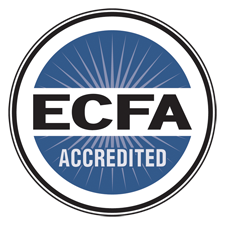I’m still thinking about the link posted on the ASA website a few days ago (the twitter feed on the homepage features four links each weekday) about Genesis 1-11. It is a good start to a discussion I wanted to have here on concordism. This relates to the first meta-question I posed in my comments, reference in an earlier post and discussed in my remarks on April 8.
Every study of the Bible needs to address at some point the issue of what does the Bible teach about history and science and how does it relate to our modern science? The natural assumption of Christians seems to begin with a direct correlation. Countless questions about the Bible deal with how to understand a biblical passage in light of current science. Examples abound, often as legends that refuse to die.
One well-known example is that of the missing day. Joshua commanded the sun to stand still and it did until the Israelites won the battle. Bewildered at the implications of such a miracle, concordists have offered all sorts of explanations. On one side, skeptics note that the inertial forces due to the earth halting its rotation would have ripped apart the entire globe. On the other side, a myth continues to propagate that NASA astronomers have determined that there is a missing day in the history of the path of stars. The legend goes that as computer calculations have been done of the path of stars over history, that observations could not be understood unless a missing day was assumed in approximately the year of Joshua’s battle. No such observation or calculation has ever been nor could it be made. No stellar observations in those days were anywhere near precise enough for such a determination. Yet the story persists.
The stakes are high. If there isn’t a missing day, concordists have a hard time rationalizing the sun standing still. Fortunately, theories abound with alternative interpretations and ancient ideas. But it doesn’t stop skeptics from scoffing at a Bible with errors in it and mythical stories. What all of these have in common is the assumption of concordism, the basic idea that there is a correlation of biblical teaching and modern science. So a biblical teaching of the sun standing still must correlate with some scientific observations.
Some theologians will draw the line after Genesis 11, asserting that concordance is important only after Genesis 11 while the earlier passages have no claim to being historical. Others feel that no concordance is necessary in the entire Bible.
The sheer volume of articles and books on attempts to correlate biblical teaching with scientific observations indicates the strength of the assumption of concordism. But is it really true? Must it be true? If it isn’t all true and it isn’t all false, how do we decide what is and what isn’t historical? Let’s ponder these questions in the next few posts.


Posted Wednesday, May 4, 2016
John Calvin wrote in the Institutes:
“There are innumerable evidences both in heaven and on earth of [God’s] wonderful wisdom; not only those more recondite matters for the closer observation of which astronomy, medicine and all natural sciences are intended, but also those which thrust themselves upon the sight of even the most untutored and ignorant persons, so that they cannot open their eyes without being compelled to witness them. Indeed, [those] who have quaffed or even tasted the liberal arts penetrate with their aid far more deeply into the secrets of the divine wisdom…”(Book 1; Ch. 5: section 2, Notes from Institutes of the Christian Religion by John Calvin).
Calvin went on to write that God’s providence shows itself more clearly when one observes the motion of the stars, when we measure their intervals and note their properties. When one observes these, Calvin wrote, “so the mind must rise to a somewhat higher level to look upon [God’s] glory.”
This tradition might be thought of as a kind of concordism, but it is not one that makes science adjust to Scripture. Rather it implies that the truth that each “book” speaks must contribute to the total truth. Human interpretation of Scripture (and the theology that both informs how we interpret Scripture and the theological doctrines that we derive from our interpretations) may (and most certainly do) contain errors. Too often that is the result of reading just one of the “books.”